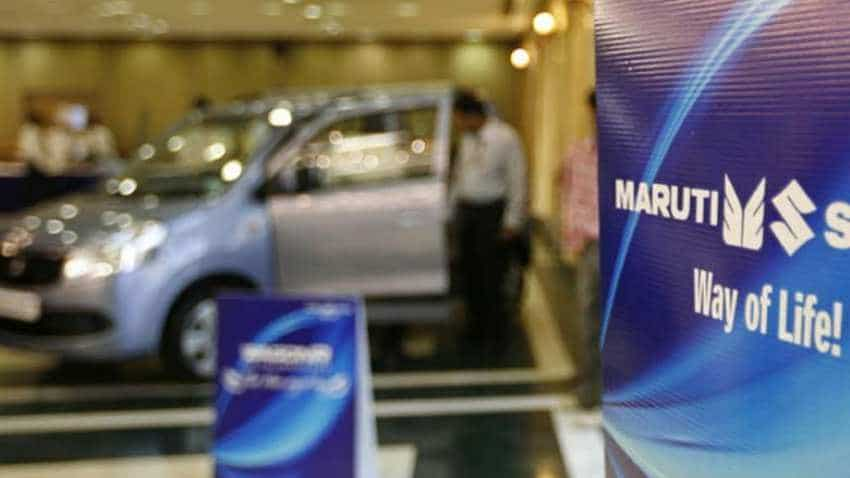Modi-to-Modi-2014-to-2019 wins: This automaker more than tripled investor wealth - You can buy it still, gains in offing say experts
Yes, general elections in India do create a gateway for placing bets in making short and long term gains in kitty.

Following the ups and downs of the Lok Sabha Elections 2019 today, the share price of automaker Maruti Suzuki finished at Rs 6,932.80 per piece, up by Rs 28.20 or 0.42% - the stock did touch an intraday high of Rs 7,049.90 per piece. However, a lot has changed since the last election, especially on Dalal Street. Elections do create a gateway for placing bets in making short and longer term gains in your kitty. Interestingly, such a performance has been given by Maruti Suzuki as well stretched over the 5-year Modi government term all the way to the latest victory at the hustings. In five years, definitely this automaker has made many investors richer than before. Prime Minister Narendra Modi will soon be taking his second-consecutive oath to lead India for another 5 years.
The highest level Maruti witnessed was last year in July, 2018, where the stock rocketed to a new high of Rs 9,922.85 per piece. The 2014 election poll was was on May 16, 2014. If we compare Maruti’s all-time high from previous election counting day, i.e May 16, 2014, then the company’s shares jumped a breathtaking Rs 7,768 or 360.57%. Then the stock was near Rs 2,154-mark.
However, since last year the share price of Maruti has seen significant change especially during bearish market sentiments in mid-September 2018. Still, the investors who bought shares of Maruti back in May 2014, stand richer by quite a margin because of its stellar performance. On current market price, Maruti has given 227.22% return in a span of 5 years.
Guess what! You can still continue to buy Maruti shares.
Earlier, Mitul Shah, Research Analyst at Reliance Securities said, “MSIL had been banking on success of its new launches. Recently, its volume was impacted by phasing out of the old Alto, initial competitive impact of new XUV300 launch, higher inventory and rural slowdown. However, company has launched its BS-6 products starting with new Alto at affordable pricing. We believe that its BS-6 products would be most competitively priced with better technology. We believe that the industry demand situation may remain low in 1HFY20, while it would bounce back in 2HFY20. BS-6 products would help company to gain further market shares 2HFY20 onwards. We believe that the Company’s cost control measures and overall inventory reduction at industry level would result in lower discounts and bring back pricing power for the PV makers, going forward. This would help MSIL in reaching closer to its average EBIDTA margins ~14% going forward.”
Looking ahead, Shah said, “We expect MSIL’s volume to clock ~8% CAGR over FY19-FY21E. Company’s BS-VI pricing appears lower than expectation, accordingly, we lower our revenues and also lower our margin estimates due to margin pressure. We cut our EPS estimates by 10% and 7% for FY20E and FY21E respectively. In view of better visibility on company’s BS-VI products and its affordable incremental pricing, we expect market share gain and margin improvement for MSIL going forward. Therefore, we increase our valuation multiple for MSIL from 21x to 22x. We reiterate our BUY recommendation on the stock with a revised Target Price of Rs 7,570 (from Rs 7,750 earlier), valuing the stock at 22x FY21E EPS.”
Get Latest Business News, Stock Market Updates and Videos; Check your tax outgo through Income Tax Calculator and save money through our Personal Finance coverage. Check Business Breaking News Live on Zee Business Twitter and Facebook. Subscribe on YouTube.
RECOMMENDED STORIES

Rs 3,500 Monthly SIP for 35 years vs Rs 35,000 Monthly SIP for 16 Years: Which can give you higher corpus in long term? See calculations

Looking for short term investment ideas? Analysts suggest buying these 2 stocks for potential gain; check targets
08:17 PM IST









 PM Modi to launch Rs 7,000 crore projects in Prayagraj; inspect development work for Mahakumbh Mela
PM Modi to launch Rs 7,000 crore projects in Prayagraj; inspect development work for Mahakumbh Mela Vladimir Putin says Russia is ready to set up its manufacturing operations in India; hails 'Make in India' initiative
Vladimir Putin says Russia is ready to set up its manufacturing operations in India; hails 'Make in India' initiative  PM Modi to attend all India DGP/IGP conference in Odisha's Bhubaneswar today
PM Modi to attend all India DGP/IGP conference in Odisha's Bhubaneswar today PM Modi to inaugurate Rising Rajasthan Global Summit in Jaipur on December 9
PM Modi to inaugurate Rising Rajasthan Global Summit in Jaipur on December 9  PM Modi to inaugurate development works in Prayagraj on December 13: CM Yogi Adityanath
PM Modi to inaugurate development works in Prayagraj on December 13: CM Yogi Adityanath